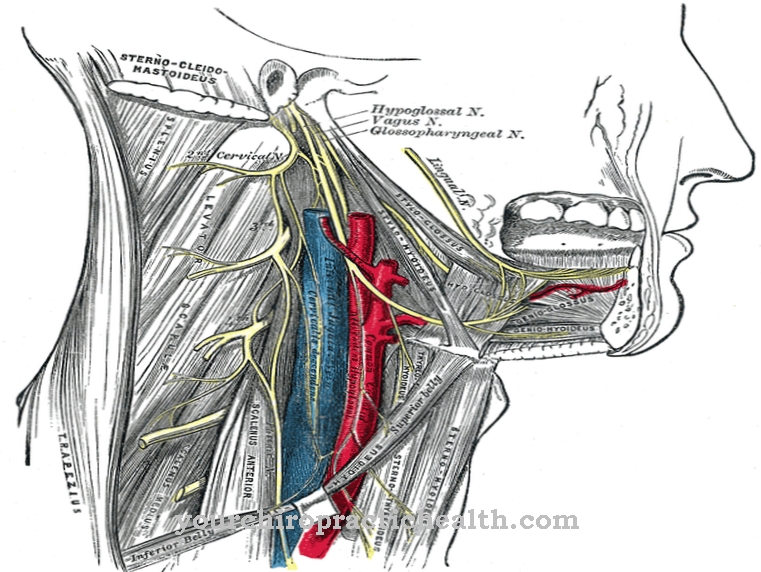Genital organs are those structures in the body that enable the determination of the physical sex of a person. Their main function is sexual reproduction.
What are genital organs?

Under Genital organs those orange are understood by which the gender of a person is predominantly determined and by which reproduction is made possible. Depending on their function, a distinction is made between sexual organs and reproductive organs.
The sexual organs include, for example, the penis and vagina, while the reproductive organs include the uterus. In addition, a distinction is made between the primary gender characteristics and the secondary gender characteristics. The primary sexual characteristics are already present before birth and are used for reproduction. They include the vagina, fallopian tubes, uterus, testicles and penis.
In comparison, the secondary sexual characteristics do not develop until puberty and are not directly related to reproduction. They include the female breast and male chest or beard hair, among other things.
Anatomy & structure
The structure of the Genital organs of women and men is visibly different, but they develop from the same tissue in the early embryonic stages.
The differences between the sexes only manifest themselves in the course of the further development of the fetus. A newborn is recognized as a girl or a boy based on its external sexual organs. The external sexual organs of a woman are composed of the mons pubis, the large and small labia, the outer area of the clitoris and the vaginal entrance. The breast tissue with the mammary glands is also part of the external genital organs.
The external sexual organs of men include the penis and scrotum (scrotum). The testicles themselves, together with the epididymis, the vas deferens, the sex glands and the prostate, are counted among the internal male sexual organs. In women, the ovaries, fallopian tubes, uterus and vagina belong to the internal reproductive organs.
Function & tasks
The main function of the male Genital organs is the production of semen for the fertilization of an egg cell. Sperm cells are produced in the testes and are stored in the epididymis. The testicles are located in the scrotum because the germ cells of men are dependent on a lower temperature than prevails in the body.
After the seminal fluid has been produced in special glands and the prostate, it is transported through the vas deferens. The penis ensures that the sperm can really penetrate deep into the vagina. However, the penis can only enter the vagina when it is stiff. This is possible because the penis consists of three cavernous bodies in which blood can accumulate.
The tasks of the female sexual organs relate primarily to the production of egg cells and the creation of a suitable environment for carrying a child to term. The egg cells are produced in the ovaries, which are transported onwards via the fallopian tubes towards the uterus. The fertilized egg can then implant itself in the uterus and develop into a baby. The vagina serves as the entry portal for the erect penis.
In men, the glans is primarily responsible for the sensation of sexual pleasure, in women the pleasure center is the clitoris.
Illnesses & ailments
There are a variety of problems and complaints that can occur in the genital area. These can have various causes. The most common genital areas are itching and painful.
If there is pain when urinating, it may be a urinary tract infection. This is more common in women and can also lead to increased discharge from the vagina. Men can also suffer from inflammation in the genital area. These include inflammation of the glans or the foreskin, prostatitis or testicular inflammation.
It is not uncommon for men to suffer from so-called phimosis, i.e. a narrowing of the foreskin in which the foreskin cannot be pulled over the glans. In addition to these gender-specific diseases, however, there are also genital complaints that occur in both men and women.
Above all, this includes sexually transmitted diseases such as chlamydia, gonorrhea or syphilis. If these diseases remain undetected, they can seriously damage the body and even lead to infertility.

























.jpg)

.jpg)
